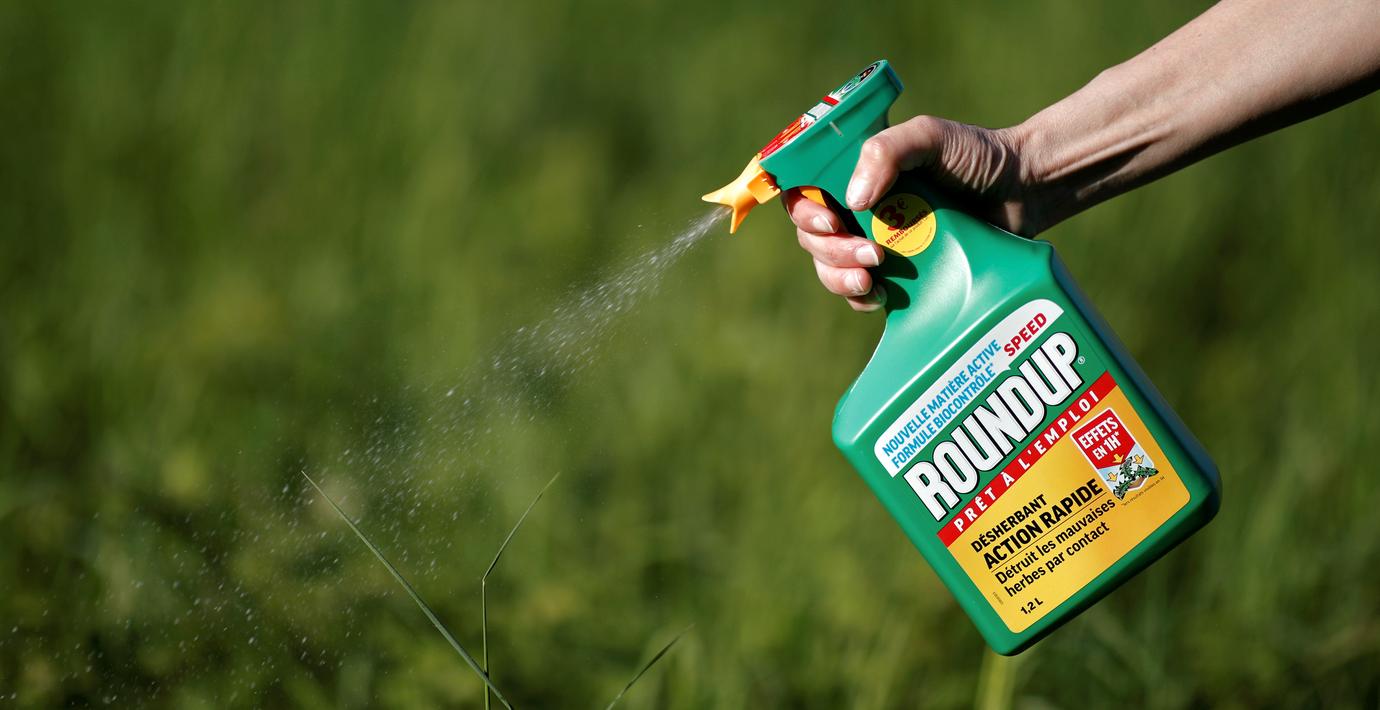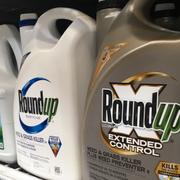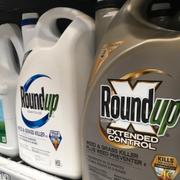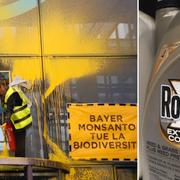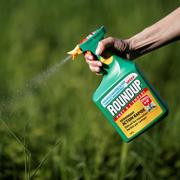Wikipedia (en)
Glyphosate (N-(phosphonomethyl)glycine) is a broad-spectrum systemic herbicide and crop desiccant. It is an organophosphorus compound, specifically a phosphonate. It is used to kill weeds, especially annual broadleaf weeds and grasses that compete with crops. It was discovered to be an herbicide by Monsanto chemist John E. Franz in 1970. Monsanto brought it to market for agricultural use in 1974 under the trade name Roundup. Monsanto's last commercially relevant United States patent expired in 2000.
Farmers quickly adopted glyphosate, especially after Monsanto introduced glyphosate-resistant Roundup Ready crops, enabling farmers to kill weeds without killing their crops. In 2007, glyphosate was the most used herbicide in the United States' agricultural sector and the second-most used in home and garden (2,4-D being the most used), government and industry, and commerce. By 2016 there was a 100-fold increase from the late 1970s in the frequency of application and volume of glyphosate-based herbicides (GBHs) applied, with further increases expected in the future, partly in response to the global emergence and spread of glyphosate-resistant weeds.Glyphosate is absorbed through foliage, and minimally through roots, and transported to growing points. It inhibits a plant enzyme involved in the synthesis of three aromatic amino acids: tyrosine, tryptophan, and phenylalanine. Therefore, it is effective only on actively growing plants and is not effective as a pre-emergence herbicide. An increasing number of crops have been genetically engineered to be tolerant of glyphosate (e.g. Roundup Ready soybean, the first Roundup Ready crop, also created by Monsanto) which allows farmers to use glyphosate as a postemergence herbicide against weeds. The development of glyphosate resistance in weed species is emerging as a costly problem.
While glyphosate and formulations such as Roundup have been approved by regulatory bodies worldwide, concerns about their effects on humans and the environment persist, and have grown as the global usage of glyphosate increases. A number of regulatory and scholarly reviews have evaluated the relative toxicity of glyphosate as an herbicide. The German Federal Institute for Risk Assessment toxicology review in 2013 found that "the available data is contradictory and far from being convincing" with regard to correlations between exposure to glyphosate formulations and risk of various cancers, including non-Hodgkin lymphoma (NHL). A meta-analysis published in 2014 identified an increased risk of NHL in workers exposed to glyphosate formulations.In March 2015 the World Health Organization's International Agency for Research on Cancer classified glyphosate as "probably carcinogenic in humans" (category 2A) based on epidemiological studies, animal studies, and in vitro studies. In November, 2015, the European Food Safety Authority concluded that "the substance is unlikely to be genotoxic (i.e. damaging to DNA) or to pose a carcinogenic threat to humans," later clarifying that while carcinogenic glyphosate-containing formulations may exist, studies "that look solely at the active substance glyphosate do not show this effect." The WHO and FAO Joint committee on pesticide residues issued a report in 2016 stating the use of glyphosate formulations does not necessarily constitute a health risk, and giving admissible daily maximum intake limits (one milligram/kg of body weight per day) for chronic toxicity. The European Chemicals Agency (ECHA) classified glyphosate as causing serious eye damage and toxic to aquatic life, but did not find evidence implicating it to be a carcinogen, a mutagen, toxic to reproduction, nor toxic to specific organs.
